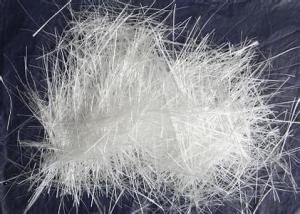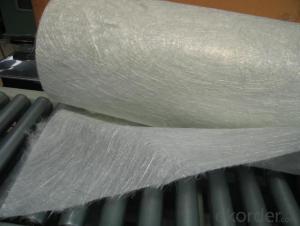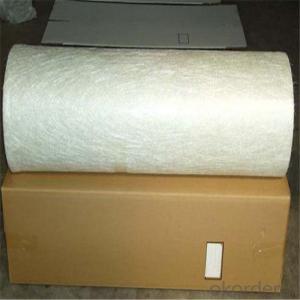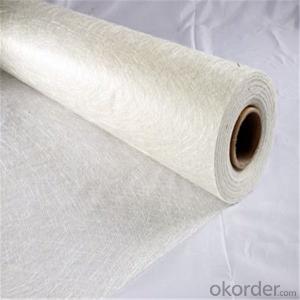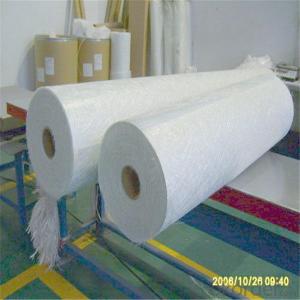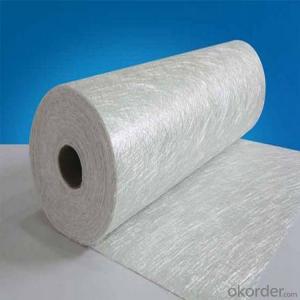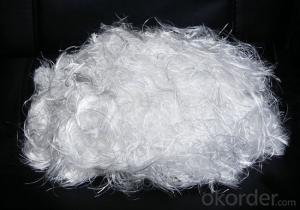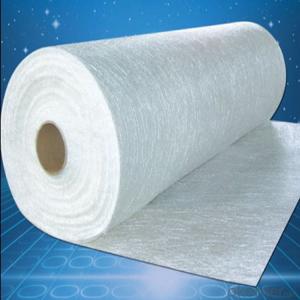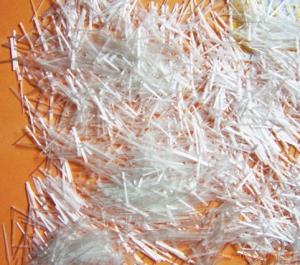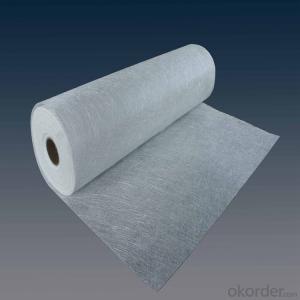Fiber Glass Chopped Strands For BMC
- Loading Port:
- China Main Port
- Payment Terms:
- TT or LC
- Min Order Qty:
- -
- Supply Capability:
- -
OKorder Service Pledge
OKorder Financial Service
You Might Also Like
1.Brief Introduction
Chopped Strands for BMC are compatible with unsaturated polyester, epoxy resin and phenolic resins.
The end-use applications include transportation, building & construction, electronic & electrical, mechanical, and light industry.
2.Product Features
Extremely low resin demand, delivering low viscosity to BMC paste
High impact strength; High LOI rate
High strand stiffness; Compatible with rubber
3.Product Specifications
Property | Fibre diameter | Moisture Content | Size Content | Chop |
(%) | (%) | (%) | (%) | |
Mathods | IS01888 | ISO3344 | ISO1887 | |
3mm | ±10 | ≤3.0 | 0.1±0.05 | 98 |
6mm | ||||
9mm | ||||
12mm |
Special specification can be produce according to customer requirements.
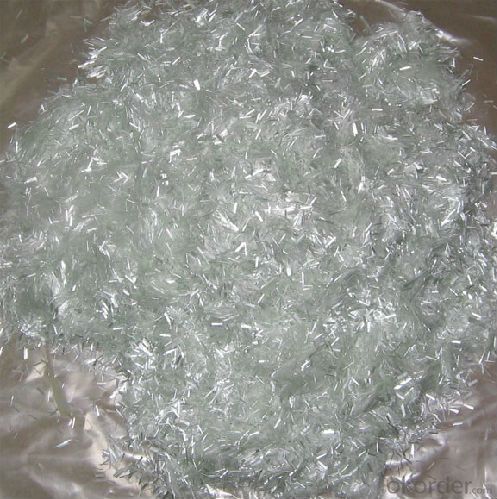
4.FAQ
Packaging:
Each bag can be taken (15-25kgs)。 Could also take a big container bag.
Storage:
Unless otherwise specified, It should be stored in a dry, cool and rain-proof area. It is recommended that the room temperature and humidity should be always maintained at 15℃~35℃ and 35%~65% respectively.
- Q:Can fiberglass chopped strand be used in water treatment tanks?
- Yes, fiberglass chopped strand can be used in water treatment tanks. Fiberglass is resistant to corrosion and can withstand exposure to chemicals commonly found in water treatment processes. Additionally, it is lightweight, durable, and can be easily molded into various tank shapes and sizes.
- Q:Can fiberglass chopped strand be used for reinforcing concrete?
- Yes, fiberglass chopped strand can be used for reinforcing concrete. It provides improved tensile strength and crack resistance to the concrete, making it more durable and resistant to damage. Additionally, fiberglass chopped strand is corrosion-resistant, lightweight, and easy to handle, making it a popular choice for concrete reinforcement in various construction applications.
- Q:How does the fiber orientation of fiberglass chopped strand affect its performance?
- The fiber orientation of fiberglass chopped strand significantly impacts its performance. The orientation refers to the alignment of the individual fibers within the strand. Depending on the intended use and desired properties, the fiber orientation can be optimized to enhance specific characteristics. Firstly, the fiber orientation affects the mechanical strength of the fiberglass. When the fibers are aligned parallel to the applied load, they can efficiently transfer the stress, resulting in increased tensile and flexural strength. This makes the material more resistant to breakage and deformation, ideal for applications requiring high structural integrity. Secondly, the fiber orientation influences the stiffness and rigidity of the fiberglass. Fibers aligned in the direction of the load offer greater resistance to bending, making the material stiffer and able to withstand higher forces without excessive deflection. This is crucial in applications where dimensional stability and resistance to deformation are important, such as in construction or automotive industries. Moreover, the fiber orientation impacts the impact resistance of fiberglass. By aligning the fibers in multiple directions, the material can distribute the applied force more evenly, dissipating the energy and reducing the likelihood of cracking or fracturing. This makes it more suitable for applications requiring impact resistance, like protective gear or transportation components. Additionally, the fiber orientation affects the thermal and electrical conductivity of fiberglass. Depending on the desired property, fibers can be aligned to enhance or minimize heat or electrical transfer. For instance, aligning fibers perpendicular to the heat flow can improve insulation properties, while aligning them parallel to electrical current flow can enhance conductivity. In summary, the fiber orientation of fiberglass chopped strand plays a crucial role in determining its performance characteristics. By optimizing the alignment, the material's strength, stiffness, impact resistance, and thermal/electrical conductivity can be tailored to meet the specific requirements of various applications.
- Q:What are the manufacturing tolerances for fiberglass chopped strand?
- The manufacturing tolerances for fiberglass chopped strand may vary depending on the specific manufacturer and product. However, common tolerances for length and diameter are typically within a range of ±5%. Other factors such as moisture content and fiber distribution may also have their own tolerances. It is recommended to refer to the manufacturer's specifications or consult their technical documentation for precise information on the tolerances of a particular fiberglass chopped strand product.
- Q:How does the surface treatment of fiberglass chopped strand affect its adhesion to resin?
- The adhesion of resin to fiberglass chopped strand is significantly affected by the surface treatment. During the manufacturing process, fiberglass chopped strand is typically treated with a sizing agent to improve its compatibility with resin systems. The purpose of this surface treatment is to establish a chemical bond between the chopped strand and the resin matrix. By creating a thin layer on the surface of the fiberglass strands, the sizing agent acts as a bridge between the hydrophilic glass fibers and the hydrophobic resin. This layer enhances the wetting and adhesion properties of the fiberglass, promoting better bonding with the resin. The choice of sizing agent depends on the specific resin system being utilized. Different types of sizing agents can be employed to optimize adhesion with polyester, epoxy, or vinyl ester resins. Moreover, the sizing agent can be customized to offer additional advantages, such as improved impact resistance, UV stability, or heat resistance. If the fiberglass chopped strand is not adequately surface treated, the adhesion between the strands and the resin may be compromised. Inadequate wetting of the fibers by the resin can result in weak interfacial bonding, leading to delamination or reduced mechanical properties in the final composite product. In summary, the surface treatment of fiberglass chopped strand plays a vital role in enhancing its adhesion to resin. It enhances the wetting and bonding properties, ensuring the creation of a robust and long-lasting composite material.
- Q:what is glass fiber tank furnace drawing and what is used for?
- From the performance, it could be divided in wind power yarn, chopped yarn, glass pipes, thermoplastic filament winding, yarn, plastic heat wind blade, fiber, transparent tile, computer motherboard, fishing rod, transparent sheet yarn, forming the way points directly from the yarn and cake, SMC yacht accessories, rocket parts and so on. It is also used widely, like car roof, electronic yarn cloth, mobile phone motherboard
- Q:How is the creep resistance of fiberglass chopped strand composites tested?
- Fiberglass chopped strand composites are commonly tested for their creep resistance using a range of methods. One approach involves subjecting the composite material to a constant load or stress for an extended duration, typically at higher temperatures. This method, known as the creep test, allows for the evaluation of the composite's ability to resist deformation and maintain its structural integrity under prolonged load conditions. Throughout the creep test, the composite specimen is placed under constant stress, and its deformation is continuously measured over time. Specialized equipment, such as a creep testing machine, applies the desired load and monitors the deformation. Elevated temperatures are utilized during the test as creep is more apparent under such conditions. The outcomes of the creep test are typically represented as creep curves, which illustrate the relationship between deformation and time under the applied stress. These curves offer valuable insights into the creep behavior of the fiberglass chopped strand composite, including the rate of deformation, the time-dependent nature of creep, and the potential for failure. By assessing the creep resistance of fiberglass chopped strand composites, manufacturers and researchers can determine their suitability for various applications, such as structural components in construction, automotive parts, and aerospace components. This testing ensures that the composite material can endure long-term loading without excessive deformation or failure, instilling confidence in its performance and durability.
- Q:Is fiberglass chopped strand biodegradable?
- Fiberglass chopped strand does not possess biodegradability. It comprises glass fibers and a polymer resin, forming a reinforced plastic. The glass fibers do not naturally disintegrate, and the polymer resin is commonly non-biodegradable too. Consequently, fiberglass chopped strand will endure in the environment for an extended period and will not undergo decomposition via natural mechanisms.
- Q:How does the fiber dispersion affect the performance of fiberglass chopped strand?
- Fiber dispersion refers to the uniform distribution of fibers within a material. In the case of fiberglass chopped strand, it is crucial to have proper fiber dispersion for optimal performance. The fiber dispersion affects the performance of fiberglass chopped strand in several ways. Firstly, proper dispersion ensures that the fibers are evenly distributed throughout the material, which enhances its strength and stiffness. When the fibers are uniformly dispersed, they can effectively resist applied loads and distribute stress evenly. This leads to improved mechanical properties such as higher tensile strength and greater resistance to deformation. Secondly, fiber dispersion affects the overall quality and appearance of fiberglass chopped strand products. Uneven dispersion can result in areas with excessive fiber concentration, leading to a non-uniform appearance and potential weak spots. On the other hand, proper dispersion enhances the aesthetic appeal and consistency of the finished product. Additionally, fiber dispersion plays a crucial role in the bonding between the fibers and the matrix material in fiberglass products. The matrix material, usually a resin, acts as a binder for the fibers and provides overall structural integrity. When the fibers are well-dispersed, they have a larger surface area in contact with the matrix, resulting in a stronger bond. This bond is essential for the transfer of stress between the fibers and the matrix, which ultimately determines the overall strength and performance of the fiberglass chopped strand product. In summary, fiber dispersion significantly affects the performance of fiberglass chopped strand. It impacts the material's mechanical properties, appearance, and bonding characteristics. Proper dispersion ensures uniform distribution of fibers, leading to enhanced strength, improved aesthetics, and better overall performance of fiberglass chopped strand products.
- Q:Is fiberglass chopped strand suitable for applications requiring high tensile strength?
- Fiberglass chopped strand is not typically suitable for applications requiring high tensile strength. Chopped strand is made up of short lengths of fiberglass fibers that are randomly oriented. While it does provide some strength and reinforcement properties, it is not as strong as continuous strand fiberglass or other materials specifically designed for high tensile strength applications. For applications requiring high tensile strength, it is recommended to consider materials such as carbon fiber or aramid fibers, which offer superior strength properties.
1. Manufacturer Overview |
|
|---|---|
| Location | |
| Year Established | |
| Annual Output Value | |
| Main Markets | |
| Company Certifications | |
2. Manufacturer Certificates |
|
|---|---|
| a) Certification Name | |
| Range | |
| Reference | |
| Validity Period | |
3. Manufacturer Capability |
|
|---|---|
| a)Trade Capacity | |
| Nearest Port | |
| Export Percentage | |
| No.of Employees in Trade Department | |
| Language Spoken: | |
| b)Factory Information | |
| Factory Size: | |
| No. of Production Lines | |
| Contract Manufacturing | |
| Product Price Range | |
Send your message to us
Fiber Glass Chopped Strands For BMC
- Loading Port:
- China Main Port
- Payment Terms:
- TT or LC
- Min Order Qty:
- -
- Supply Capability:
- -
OKorder Service Pledge
OKorder Financial Service
Similar products
New products
Hot products
Hot Searches
Related keywords
